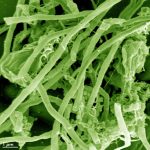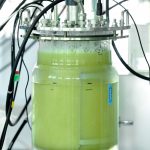Groundbreaking biotech project funded: Archaea are the new superorganisms
New consortium, funded by the Federal Ministry of Education and Research in Germany, will decipher the potential of methanogenic archaea to produce marketable products
Everyone can imagine what bacteria and viruses are like, but archaea?
Discovered in the late 1970s and determined to be distinct from bacteria, the oldest living organisms on earth have been neglected by science for a long time. A new consortium, funded by the Federal Ministry of Education and Research in Germany, will decipher the potential of methanogenic archaea to produce marketable products.
The project, named MethanoPEP (Methanogens as platform organisms for energy storage, gene expression and production of chemicals of higher added value), is funded to the tune of millions of euros for the next three years. Participating researchers are already talking about super- and platform organisms and a completely new type of biotechnology. An enormous leap in research and development is expected.
MethanoPEP: Joining forces of the research elite and technology pioneers in archaea biotechnology
The MethanoPEP consortium is composed of the who’s who of German archaea scientists from the Institute of Microbiology at the TU Dresden, the Christian-Albrechts-University of Kiel, the Technical University of Central Hesse, the Eberhard Karls University of Tübingen and Electrochaea GmbH in Planegg, the outstanding development and industrial company that uses archaea to biosynthesize methane.
“This project is truly unique. For the first time, top-level research in the field of methanogenic archaea in Germany has come together to explore the full potential of these versatile and fascinating unicellular organisms,” says Dr. Doris Hafenbradl, microbiologist and Chief Technology Officer of Electrochaea GmbH.

Electron microscope photograph of the Electrochaea archaea strain, a variation of Methanothermobacter thermautotrophicus. ©Prof. Andreas Klingl
Research results from the MethanoPEP project will allow development of new products – produced by methanogenic archaea – which will then be de-risked for their potential for marketing and scaling by the team at Electrochaea, led by Dr. Hafenbradl and CEO Dr. Mich Hein. Previously, Electrochaea has made a name for itself by optimizing biomethanation, the production of methane by archaea, by taking this technology from the laboratory to commercial operation.
Through technological development, Electrochaea has brought the world’s first industrial-scale biomethanation reactors, containing archaea, into operation. Biomethanation plants with Electrochaea technology are located in Switzerland, Denmark and the USA and feed renewable methane into the gas grid. In Planegg, Electrochaea operates its laboratory-scale research reactors filled with archaea. As an industrial partner in the MethanoPEP project, the company now wants to position itself as a pioneer in other uses of this important platform organism.
Extremophiles with almost unlimited application possibilities
Applications for archaea are currently limited by the fact that too little research has been completed on the possible uses of these organisms in order to make advances in medicine, energy supply, environmental and climate protection, materials research, and biosensor technology and filtration. For many technological challenges facing modern society, these microbes could be the solution.
Many of the Archaea species known so far are extremophiles: they live at extreme temperature, pH, salt concentration or pressure. “In fact, we have only scratched the surface of what is possible with Archaea. We see enormous economic potential,” says Dr Hafenbradl.
About Electrochaea GmbH
Based on biocatalysis, Electrochaea offers a nationally and internationally patented power-to-gas key technology, which recycles CO2 at low cost and at the same time produces biomethane from surplus electrical energy that can be stored and used as required. The first industrial-scale plants are operating successfully in the USA, Switzerland and Denmark. Plants with a capacity of more than one gigawatt are planned by 2025. 23 employees work for Electrochaea in Denmark and at the headquarters in Munich-Planegg. CEO is Mich Hein.
Source: Electrochaea, press release, 2020-02-13.

